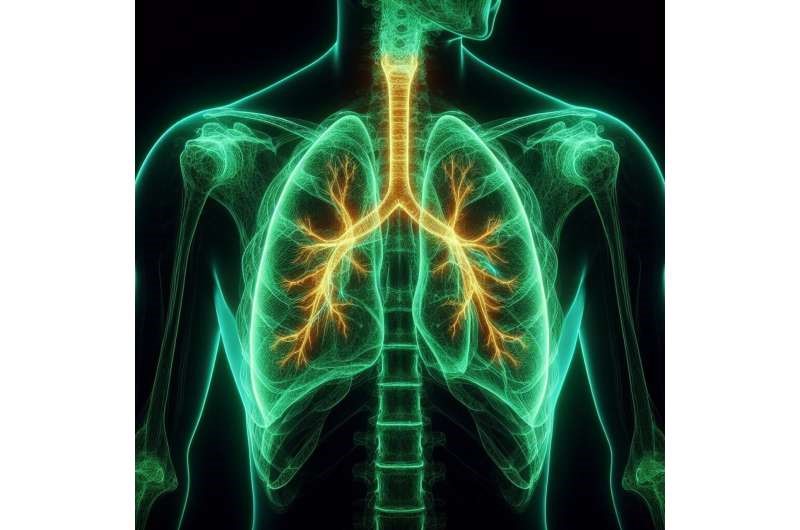Description

Source: MedicalExpress
Disclaimer: Copyright infringement not intended.
Context
- Research shows that ferroptosis, a form of cell death, occurs in severe COVID-19 patient lungs.
Details
- Ferroptosis is a distinct form of regulated cell death characterized by iron-dependent lipid peroxidation, leading to oxidative damage and cell death.
- Unlike apoptosis, necrosis, or autophagy, ferroptosis involves unique biochemical pathways and morphological changes.
- It has significant implications in various diseases, including cancer, neurodegeneration, and ischemia-reperfusion injury.
Historical Background
- The term "ferroptosis" was coined in 2012 by Brent R. Stockwell and colleagues, who described it as an iron-dependent form of non-apoptotic cell death.
- This discovery expanded the understanding of cell death mechanisms and opened new avenues for research into disease pathology and therapeutic interventions.
Key Features
- Iron Dependence: Excessive iron catalyzes the formation of reactive oxygen species (ROS) through the Fenton reaction, leading to lipid peroxidation.
- Lipid Peroxidation: Accumulation of lipid peroxides damages cell membranes, causing cell death.
- Glutathione Peroxidase 4 (GPX4) Inactivation: Inhibition or depletion of GPX4, a key antioxidant enzyme, exacerbates lipid peroxidation and ferroptosis.

Regulation of Ferroptosis
Positive Regulators
- Iron Overload: Increases ROS production and lipid peroxidation.
- Inhibition of System Xc-: Reduces cystine uptake, depleting GSH and impairing GPX4 function.
- Inhibition of GPX4: Directly induces lipid peroxidation and ferroptosis.
- ACSL4 Activation: Enhances PUFA incorporation into phospholipids, promoting peroxidation.
Negative Regulators
- Iron Chelators: Bind free iron, reducing its availability for ROS generation.
- Antioxidants: Neutralize ROS and inhibit lipid peroxidation (e.g., Vitamin E, Fer-1, Liproxstatin-1).
- Upregulation of GPX4: Enhances detoxification of lipid peroxides.
Physiological and Pathological Roles
Physiological Roles
- Immune Response: Ferroptosis can play a role in modulating the immune system and inflammation.
- Development: Certain developmental processes may involve ferroptosis for tissue remodeling.
Pathological Roles
- Cancer: Ferroptosis can suppress tumor growth; however, some cancer cells develop resistance to ferroptosis.
- Neurodegenerative Diseases: Excessive ferroptosis contributes to neuronal loss in diseases like Alzheimer's, Parkinson's, and ALS.
- Ischemia-Reperfusion Injury: Ferroptosis exacerbates tissue damage following ischemic events in the heart, brain, and kidneys.
Sources:
MedicalExpress
|
PRACTICE QUESTION
Q. Consider the following statements regarding ferroptosis:
- Ferroptosis involves the accumulation of reactive oxygen species (ROS) due to iron catalysis.
- Lipid peroxidation is a hallmark of ferroptosis.
- Ferroptosis can be effectively inhibited by antioxidants such as Vitamin E.
Which of the statements given above is/are correct?
A) 1 and 2 only
B) 2 and 3 only
C) 1 and 3 only
D) 1, 2, and 3
Answer: D)
|











